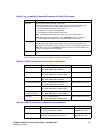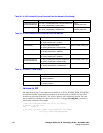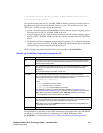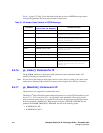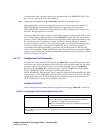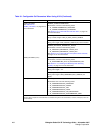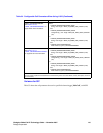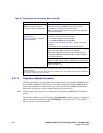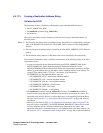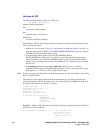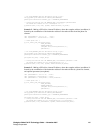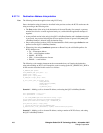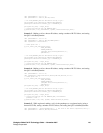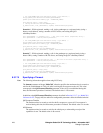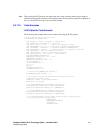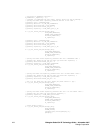Dialogic
®
Global Call IP Technology Guide — November 2007 465
Dialogic Corporation
8.3.17.3 Forming a Destination Address String
Variance for H.323
The destination address is formed by concatenating values from three different sources:
• the GC_MAKECALL_BLK
• the numberstr parameter of gc_MakeCall( )
• the phone list
The order or precedence of these elements and the rules for forming a destination address are
described below.
Notes: 1. The following description refers to a delimited string. The delimiter is configurable by setting the
value of the delimiter field in the IP_CCLIB_START_DATA structure used by the gc_Start( )
function.
2. The total length of the address string is limited by the value MAX_ADDRESS_LEN (defined in
gclib.h).
3. The destination address must be a valid address that can be translated by the remote node.
The destination information string is delimited concatenation of the following strings in the order
of precedence shown:
1. A string constructed from the destination field of type GCLIB_ADDRESS_BLK in the
GCLIB_MAKECALL_BLK. When specifying the destination information in the
GCLIB_ADDRESS_BLK, the address field contains the actual address information and the
address_type field defines the type (IP address, name, telephone number) in the address. For
example, if the address field is “127.0.0.1”, the address_type field must be
GCADDRTYPE_IP. The supported address types are:
• GCADDRTYPE_INTL – international telephone number
• GCADDRTYPE_NAT – national telephone number
• GCADDRTYPE_LOCAL – local telephone number
• GCADDRTYPE_DOMAIN – domain name
• GCADDRTYPE_URL – URL name
• GCADDRTYPE_EMAIL – e-mail address
2. The numberstr parameter in the gc_MakeCall( ) function. The numberstr parameter is
treated as a free string that may be a delimited concatenation of more than one section. The
application may include a prefix in a section that maps to a corresponding field in the Setup
message. See Section 8.3.17.4, “Destination Address Interpretation”, on page 468, for more
information.
3. Phone list as described in Table 34, “Configurable Call Parameters When Using H.323”, on
page 461 (and set using IPSET_CALLINFO, IPPARM_PHONELIST). Phone List is treated
as a free string that may be a delimited concatenation of more than one section. The
application may prefix a section that maps to a corresponding field in the Setup message. See
the Section 8.3.17.4, “Destination Address Interpretation”, on page 468 for more information.



